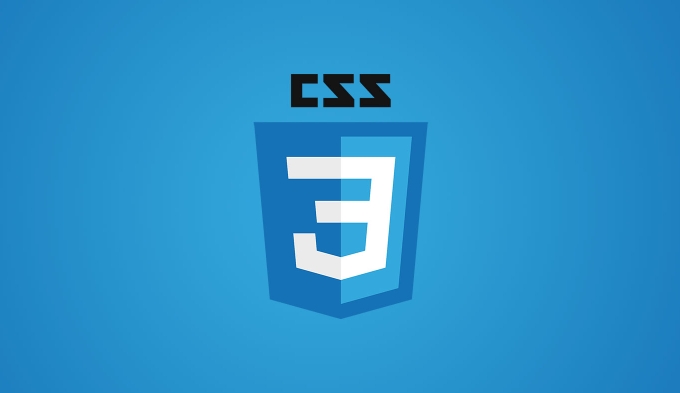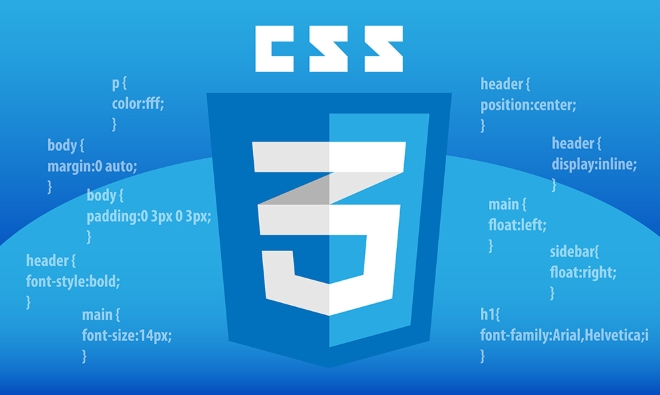Explain the difference between `px`, `pt`, and `pc` units
Jul 22, 2025 am 02:48 AMpx, pt, and pc are common units in web design and typography, but have different uses. 1.px (pixels) is the basic unit of screen display, used for front-end layout, such as font size, margins and element size. The advantages are good compatibility and support consistent scaling; 2.pt (dot) is a printing unit, 1pt=1/72 inch, suitable for printing style and PDF layout, but the screen display is affected by the device; 3.pc (pick card) is a larger printing unit, 1pc=12pt, which is rarely used now, because of poor readability and compatibility, there is no obvious advantage. Understanding the differences will help to select units reasonably according to project needs.

In web design and typesetting, px , pt , and pc are common units of size, but their uses and manifestations are not the same. Simply put:

-
pxis the basic unit of screen display -
ptis more inclined to print and physical size -
pcis a relatively large printing unit with a low frequency of use.
Let’s take a look at the differences and applicable scenarios between them.
What is px ? Why is it important?
px (pixels) is the unit most commonly used in web development, especially in front-end layouts. It represents a point on the screen, which is usually considered the "minimum display unit".

On modern screens, 1px does not necessarily equal a physical pixel, especially on high-definition screens (such as Retina screens), multiple physical pixels may be used to render pixels in a CSS. This is called the "device pixel ratio".
Common usage:

- Set the font size
- Control margins, padding
- Layout element width and height
advantage:
- Precise control
- Good compatibility on different devices
- Supports consistent performance when scaling
What is pt ? Which scenarios are suitable for?
pt (dot) is a traditional printing unit, 1pt = 1/72 inches. It is more used in print styles or designs that require precise physical dimensions.
For example, if you want a text to be printed as 12pt font size, you can use pt to define the font size.
Common usage:
- Print stylesheet
- PDF Typesetting
- Design that requires accurate output of physical dimensions
Notice:
- When displayed on the screen, the actual size of
ptwill be affected by the device resolution - Different operating systems may also have slightly different renderings of pt
What is pc ? Is it still commonly used now?
pc (pick card) is also a printing unit, 1pc = 12pt. It is larger than pt and is usually used in block-level units in typography.
Although it has a certain history in the printing industry, it is rarely used in web development. Although CSS supports pc , most developers prefer to use pt or px because they are more intuitive and have better compatibility.
For example:
font-size: 1.5pc; /* is equivalent to 18pt */
Reasons for not recommended use:
- Poor readability, not as common as px or pt
- No obvious advantage to replace other units
- Mainstream frameworks and libraries basically do not use PC
Let's summarize the main differences:
| unit | Full name | type | Main uses | Is it affected by the screen |
|---|---|---|---|---|
| px | Pixels | Digital units | Screen display, web page layout | yes |
| pt | point | Printing unit | Print, PDF layout | No (theoretical) |
| pc | Card | Printing unit | A few typesetting requirements | no |
Basically that's it. By understanding their usage scenarios, you can choose units reasonably in different projects.
The above is the detailed content of Explain the difference between `px`, `pt`, and `pc` units. For more information, please follow other related articles on the PHP Chinese website!

Hot AI Tools

Undress AI Tool
Undress images for free

Undresser.AI Undress
AI-powered app for creating realistic nude photos

AI Clothes Remover
Online AI tool for removing clothes from photos.

Clothoff.io
AI clothes remover

Video Face Swap
Swap faces in any video effortlessly with our completely free AI face swap tool!

Hot Article

Hot Tools

Notepad++7.3.1
Easy-to-use and free code editor

SublimeText3 Chinese version
Chinese version, very easy to use

Zend Studio 13.0.1
Powerful PHP integrated development environment

Dreamweaver CS6
Visual web development tools

SublimeText3 Mac version
God-level code editing software (SublimeText3)
 Binance vs Huobi htx full-range in-depth comparison of handling fees, security and user experience
Jul 01, 2025 pm 12:27 PM
Binance vs Huobi htx full-range in-depth comparison of handling fees, security and user experience
Jul 01, 2025 pm 12:27 PM
Binance and Huobi HTX are the world's leading cryptocurrency exchanges, each with their own advantages. 1. Binance was established in 2017, with large transaction volume and strong liquidity, providing rich financial derivatives and comprehensive ecosystem services; 2. Huobi HTX was established in 2013, with a long history and a deep user base in the Asian market, especially in the Chinese community; 3. In terms of handling fees, both adopt a stepped rate structure, and ordinary users can enjoy discounts by holding platform coins.
 Which is better, Dogecoin or Bitcoin_Comparison of the difference between Dogecoin and Bitcoin
Jul 04, 2025 pm 11:09 PM
Which is better, Dogecoin or Bitcoin_Comparison of the difference between Dogecoin and Bitcoin
Jul 04, 2025 pm 11:09 PM
Bitcoin is more suitable for long-term value investment and asset preservation, while Dogecoin is suitable for short-term trading and community-driven innovative applications. 1. Bitcoin was released by Satoshi Nakamoto in 2009, aiming to build a decentralized peer-to-peer digital payment system, which is known as "digital gold". Dogecoin was born in 2013 in the Internet meme culture. It was initially positioned as an interesting community currency, and then gradually became mainstream. 2. The total amount of Bitcoin is fixed at 21 million, and the output of new coins is reduced through the halving mechanism, which is scarce; Dogecoin adopts a continuous inflation model, with a fixed addition of about 5.2 billion coins each year, which is used to encourage miners to participate in and network maintenance. 3. The confirmation time of Bitcoin transactions is long, and the fees are significantly affected by network congestion; the Dogecoin block time is 1 minute, and the transaction speed is faster.
 How to choose Ouyi OKX and Binance? 2025 Cryptocurrency Exchange Comparison Guide
Jul 01, 2025 pm 12:06 PM
How to choose Ouyi OKX and Binance? 2025 Cryptocurrency Exchange Comparison Guide
Jul 01, 2025 pm 12:06 PM
In the rapidly evolving cryptocurrency market, choosing a suitable trading platform is a key decision faced by every participant. Entering 2025, with the maturity of the market and the changes in the regulatory environment, differentiated competition among major exchanges has become increasingly obvious. As the world's leading cryptocurrency exchanges, Ouyi OKX and Binance each have their own characteristics and advantages. Understanding their service content, technical characteristics and market positioning is crucial for investors and traders.
 Is decentralized exchanges safe? What is the difference between DEX and CEX? DEX beginner guide
Jul 04, 2025 pm 01:54 PM
Is decentralized exchanges safe? What is the difference between DEX and CEX? DEX beginner guide
Jul 04, 2025 pm 01:54 PM
Decentralized exchanges (DEXs) have attracted attention in the cryptocurrency field in recent years. Unlike traditional centralized exchanges (CEX), DEX operates on blockchain and aims to provide a way to trade without trusting intermediaries. When a user trades on a DEX, the assets are usually kept in their wallet rather than stored in an escrow account on the exchange. This model brings unique security advantages, but it also comes with new challenges.
 Newbie buy coins and read this first! Comparison of the advantages and disadvantages of Bitcoin, Ethereum, Dogecoin
Jul 09, 2025 pm 08:21 PM
Newbie buy coins and read this first! Comparison of the advantages and disadvantages of Bitcoin, Ethereum, Dogecoin
Jul 09, 2025 pm 08:21 PM
For newbies who are new to digital assets, they often get into choice difficulties when facing various mainstream currencies. This article will compare the three popular currencies: Bitcoin, Ethereum, and Dogecoin in detail from the aspects of technical characteristics, usage scenarios, market evaluation, etc. to help users understand the main differences between them and their respective advantages and disadvantages.
 There are too many slanderous stories in the currency circle? Understand the key logic and risk control secrets in one article!
Jul 09, 2025 pm 08:33 PM
There are too many slanderous stories in the currency circle? Understand the key logic and risk control secrets in one article!
Jul 09, 2025 pm 08:33 PM
The currency circle seems to have a low threshold, but in fact it hides a lot of terms and complex logic. Many novices "rush into the market" in confusion and end up losing money. This article will give a comprehensive explanation of common terms in the currency circle, the operating logic of real money makers, and practical risk control strategies to help readers clarify their ideas and reduce investment risks.
 What are the types of stablecoins? What are the stablecoins in digital currency?
Jul 08, 2025 pm 11:51 PM
What are the types of stablecoins? What are the stablecoins in digital currency?
Jul 08, 2025 pm 11:51 PM
Stable coins maintain price stability by anchoring fiat currencies such as the US dollar, which are mainly divided into three categories: 1. Fiat currency collateralization types such as USDT and USDC; 2. Cryptocurrency collateralization types such as DAI; 3. Algorithm types have higher risks. Mainstream stablecoins include USDT with the highest market value and the best liquidity. USDC is known for its compliance and transparency. DAI relies on the decentralized mechanism. TUSD adopts on-chain real-time audit. BUSD is gradually withdrawing from the market due to supervision. USDP is known for its high compliance and security. Both are widely circulated on mainstream exchanges.
 Comparison of the differences and advantages and disadvantages of USDC, DAI, and TUSD (recently updated)
Jul 10, 2025 pm 09:09 PM
Comparison of the differences and advantages and disadvantages of USDC, DAI, and TUSD (recently updated)
Jul 10, 2025 pm 09:09 PM
The core difference between USDC, DAI and TUSD lies in the issuance mechanism, collateral assets and risk characteristics. 1. USDC is a centralized stablecoin issued by Circle and is collateralized by cash and short-term treasury bonds. Its advantages are compliance and transparent, strong liquidity, and high stability, but there is a risk of centralized review and single point failure; 2. DAI is a decentralized stablecoin, generated through the MakerDAO protocol, and the collateral is a crypto asset. It has the advantages of anti-censorship, transparency on chain, and permission-free, but it also faces systemic risks, dependence on centralized assets and complexity issues; 3. TUSD is a centralized stablecoin, emphasizing real-time on-chain reserve proof, providing higher frequency transparency verification, but has a small market share and weak liquidity. The three are collateral types and decentralization






